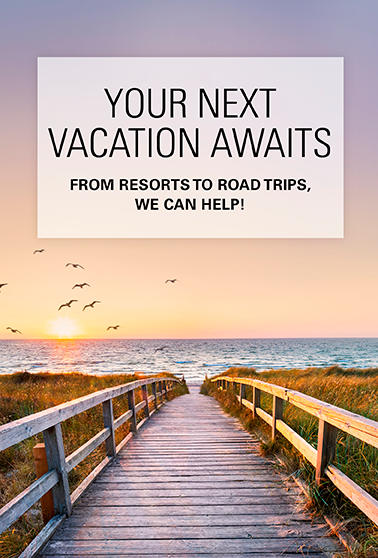The Road to Paradise Makes Mount Rainier’s Grandeur Accessible to All
Its ancient name is Takhoma, signifying a supreme mountain, and at 14,410 feet above sea level, Mount Rainier towers over the landscape and the human psyche in the Pacific Northwest.
This active volcano is the jewel of the 369-square-mile Mount Rainier National Park, where visitors can experience alpine splendor, old-growth trees, rainforests, glaciers, meadows, vistas, waterfalls and wildlife.
Thousands of climbers attempt to conquer Mount Rainier’s summit each year, but the park and its surrounding wilderness area can be enjoyed by those without mountaineering skills or backcountry chops. Several popular drives allow visitors to experience the park, including a 147-mile route that sweeps around Mount Rainier, a 129-mile loop along the Chinook Byway and the White Pass Scenic Byway.
To experience Mount Rainier in its full majesty, head to Paradise.
Check the park’s website for road and facility closures before you go, and call or go online to confirm the availability of specific attractions and services such as fuel, lodging, restaurants, seasonal events and gatherings.

Ashford
The Road to Paradise begins in the small town of Ashford on State Route 706, which runs along the scenic Nisqually River.
Ashford is tucked away in the evergreen-covered foothills of the Cascade Mountains, 8 miles east of the historic Nisqually Entrance to Mount Rainier National Park.
Because the 23-mile Paradise Loop starts and ends in this quaint roadside town, it is a popular overnight stop with stores, shops, casual restaurants and motels, cabins and inns.

Nisqually Entrance
The Nisqually Entrance on the southwest side of Mount Rainier National Park allows year-round access. It’s the oldest public entrance to the park, dating back to the 1920s and noted for its distinctive log tollbooths and rustic ranger station.
Mount Rainier National Park attracts more than 2 million visitors a year, and summer is high season. The park entrance and its attractions can be congested with cars and RVs, and parking can be scarce at visitor centers. Reservations for accommodations and camping spots are recommended
Frequent national park visitors won’t regret buying an annual pass, which pays off after just a few trips each year and sometimes lets pass-holders skip long lines at crowded entrances.
Plan on arriving early in the morning, consider visiting on weekdays to avoid busy weekends, and be flexible by making alternative plans to experience other amenities in the park if some of the most popular are packed.
From the Nisqually Entrance, the park is easily accessible by car on a well-paved road, but travelers should check for road closures and hazards before they go and know that there are no gas stations in the park (and no cell phone service to call AAA for fuel). The Road to Paradise is usually clear of snow between mid-June and mid-October, with motorists required to carry tire chains between Nov. 1 and May 1.

Longmire
Past the Nisqually entrance, the road crosses Kautz Creek and widens to make way for a small parking area with a restroom, picnic area and access and trailhead offering a first access to a wilderness experience. Hike the Kautz Creek Trail for a workout and views of Rainier and wildflowers in full bloom from mid-July through August (the park provides online status reports for its renowned wildflower meadows.)
A few miles beyond Kautz Creek is Longmire (open year-round), where the park’s original headquarters building is now a museum. Across the street is the Wilderness Information Center, where visitors can get permits for climbing and backcountry camping and information about trails. Visitors with reservations can stay at the historic National Park Inn, a rustic hotel with a dining room.
Be sure to stop at Christine Falls, a popular destination with a view of cascading waterfalls framed by a rustic stone bridge. Ricksecker Point and Narada Falls are other worthwhile stops along the way.

Paradise
The road becomes steep and curvy, eventually revealing Paradise. At 5,400 feet, Paradise is aptly named. Surrounded by meadows, snowfields and stands of firs and hemlocks, the ice-capped Mount Rainier pops like a wilderness masterpiece.
Paradise is a busy tourist draw on the south slopes of Rainier, with a host of scenic hikes ranging from short walks on paved trail with panoramic views of glaciers, waterfalls and meadows to more rugged treks for day hikers.
Birds, butterflies, deer and hoary marmots are plentiful, and from these high vantage points foraging black bear are occasionally spotted in the meadows below (keep this in mind if hunting for huckleberries).
It can be chilly, rainy and cloudy even in late spring and into the summer, so don’t forget rain gear and warm clothes.
The Henry M. Jackson Visitor Center has a cafeteria, bookstore, water fountains, restrooms and friendly rangers who are happy to offer maps and tips to help visitors get the most out of the experience.
Paradise Inn, with its cathedral-like lobby supported by giant logs, is usually open mid-May through September. The annex reopened in the spring of 2019 after a $24.6 million renovation and upgrade.
Paradise Inn has a café and a grand dining room, so guests don’t have to rough it, but they shouldn’t expect modern amenities such as Wi-Fi internet, TV or telephones. Some rooms have private baths, while guests in lodge rooms share bathrooms.
For an unforgettable view on clear, calm days, drive 3.5 miles past the visitor center to Reflection Lake and take in a mirror image of the mountain, a memory to hold until you return to tackle another part of this expansive, iconic park.
–Written by Greg Lamm, last updated in September 2022.









